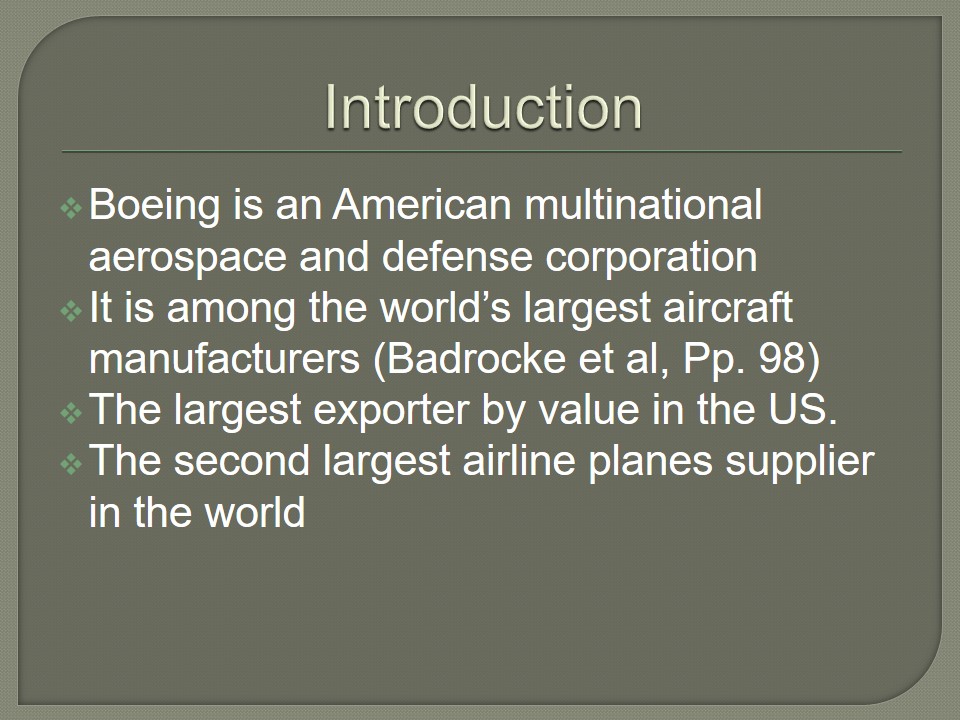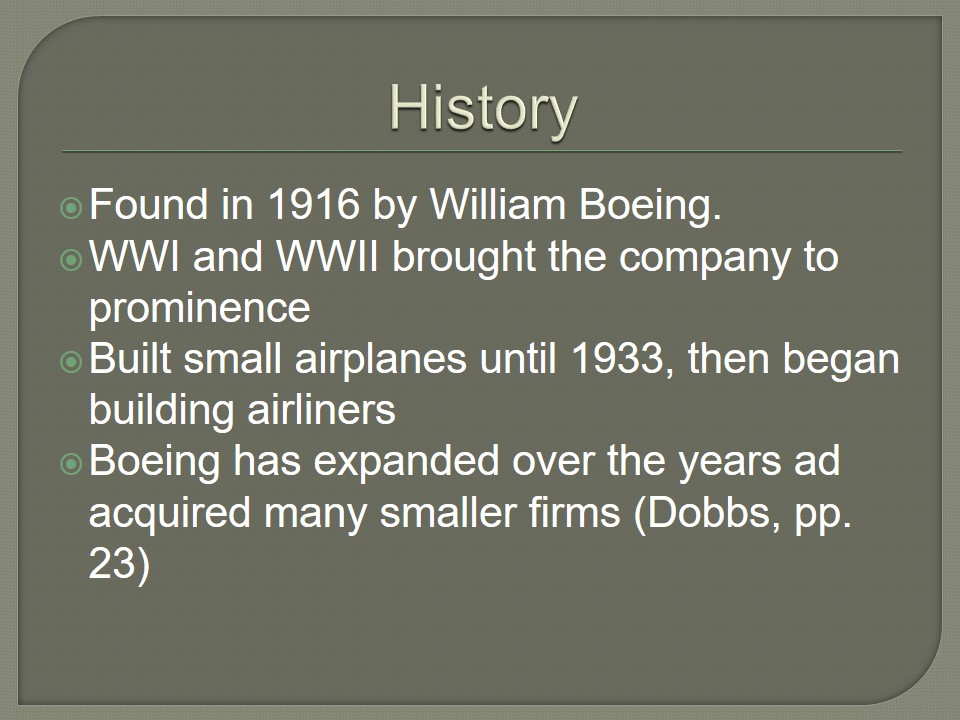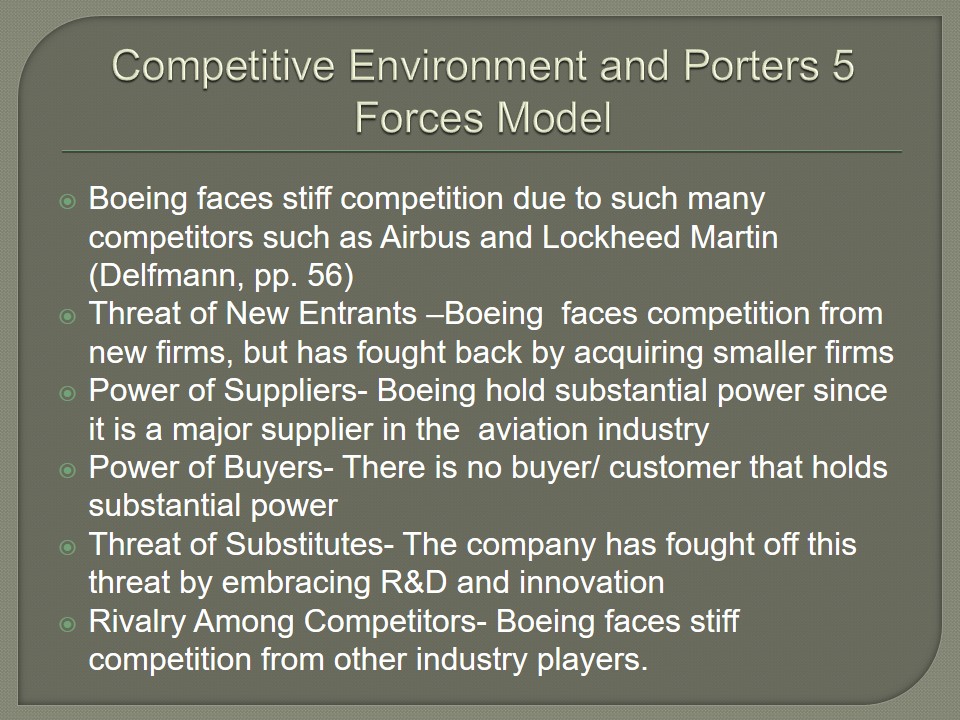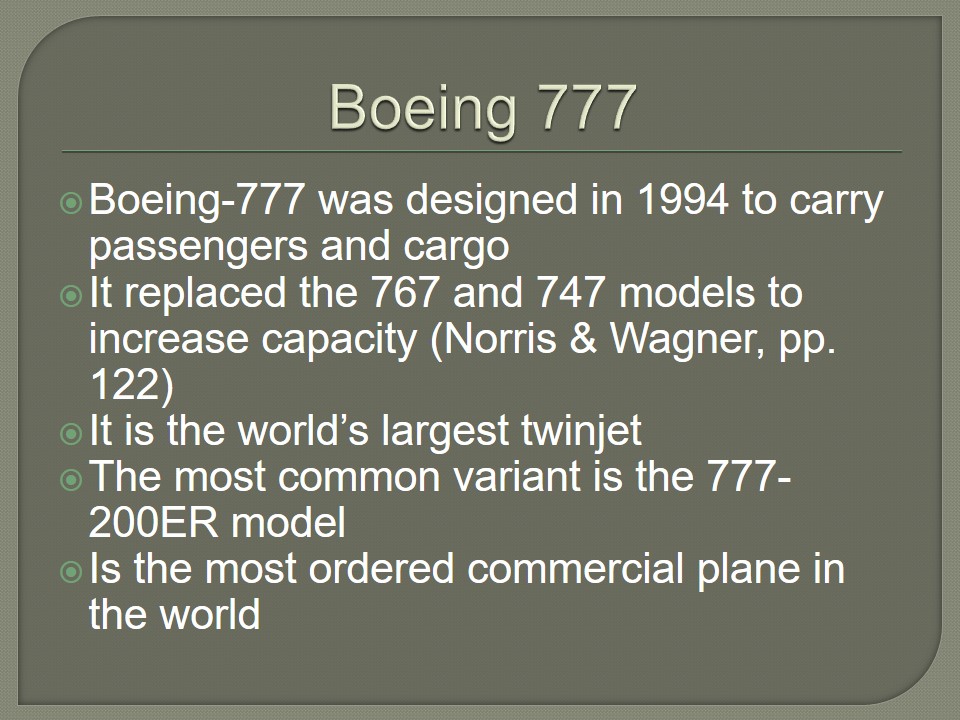Introduction
- Boeing is an American multinational aerospace and defense corporation.
- It is among the world’s largest aircraft manufacturers (Badrocke et al, Pp. 98).
- The largest exporter by value in the US.
- The second largest airline planes supplier in the world.
Boeing is an American multinational aerospace and defense corporation and is among the largest global aircraft manufacturers by revenue, orders and deliveries, and the third largest aerospace and defense contractor in the world based on defense-related revenue. Boeing is the largest exporter by value in the United States. The company is made up of multiple business units, which are Boeing Commercial Airplanes (BCA); Boeing Defense, Space & Security (BDS); Engineering, Operations & Technology; Boeing Capital; and Boeing Shared Services Group. Among all airline plane manufacturers, Boeing is the second largest supplier of airline planes after Airbus.

History
- Found in 1916 by William Boeing.
- WWI and WWII brought the company to prominence.
- Built small airplanes until 1933, then began building airliners.
- Boeing has expanded over the years ad acquired many smaller firms (Dobbs, pp. 23).
Boeing was founded in 1916 by William E. Boeing in Seattle, Washington. When the US entered WWI in the late 1917, Boeing was contracted to design and build training seaplanes. After the war, Boeing built small planes besides other products such as dressers, counters, furniture, and flat-bottom boats, and in 1933 the revolutionary Boeing 247 was introduced, the first truly modern airliner. During WWII, Boeing built a large number of bombers and by March 1944, production had been scaled up in such a manner that over 350 planes were built each month. Boeing has continued to expand its operations and has been acquiring several small companies such as National Air Transport in 1930, Vertol Aircraft Corporation in 1960, and Rockwell’s aerospace and defense units in 1966. Currently, Boeing builds airlines, defense equipment, and space exploration vehicles.

Competitive Environment and Porters 5 Forces Model
- Boeing faces stiff competition due to such many competitors such as Airbus and Lockheed Martin (Delfmann, pp. 56).
- Threat of New Entrants –Boeing faces competition from new firms, but has fought back by acquiring smaller firms.
- Power of Suppliers- Boeing hold substantial power since it is a major supplier in the aviation industry.
- Power of Buyers- There is no buyer/ customer that holds substantial power.
- Threat of Substitutes- The company has fought off this threat by embracing R&D and innovation.
- Rivalry Among Competitors- Boeing faces stiff competition from other industry players.
Analysis of Boeing Company using Porter’s 5 Forces Model.

Boeing 777
- Boeing-777 was designed in 1994 to carry passengers and cargo.
- It replaced the 767 and 747 models to increase capacity (Norris & Wagner, pp. 122).
- It is the world’s largest twinjet.
- The most common variant is the 777-200ER model.
- Is the most ordered commercial plane in the world.
The Boeing 777 is a long-range, wide-body twin-engine jet airliner manufactured by Boeing and is the world’s largest twinjet. Its distinguishing features include the largest-diameter turbofan engines of any aircraft, six wheels on each main landing gear, a circular fuselage cross-section, and blade-shaped tail cone. Developed in consultation with eight major airlines, the 777 was designed to replace older wide-body airliners and bridge the capacity difference between the 767 and 747. There are several variants of the plane such as the original 777-200, 777-200ER, 777-300, 777-300ER and 777-200LR. The most common variant used worldwide is the 777-200ER, with 415 aircraft delivered. Boeing 777 was designed to increase range and capacity.

Works Cited
Badrocke, Michael, Gunston, Bill, and Badrocke, Mike . Boeing aircraft cutaways: the history of Boeing Aircraft Company. Hamilton, MT: Osprey Publishing, 1998.
Delfmann, Werner.Strategic management in the aviation industry. Hampshire: Ashgate Publishing Ltd, 2005.
Dobbs, David A. Aviation Industry Performance: A Review of the Aviation Industry in 2008. Number: CC-2009-039, 2009.
Norris, Guy, Wagner, Mark. Boeing 777: the technological marvel. Easton: MBI Publishing, 2001.